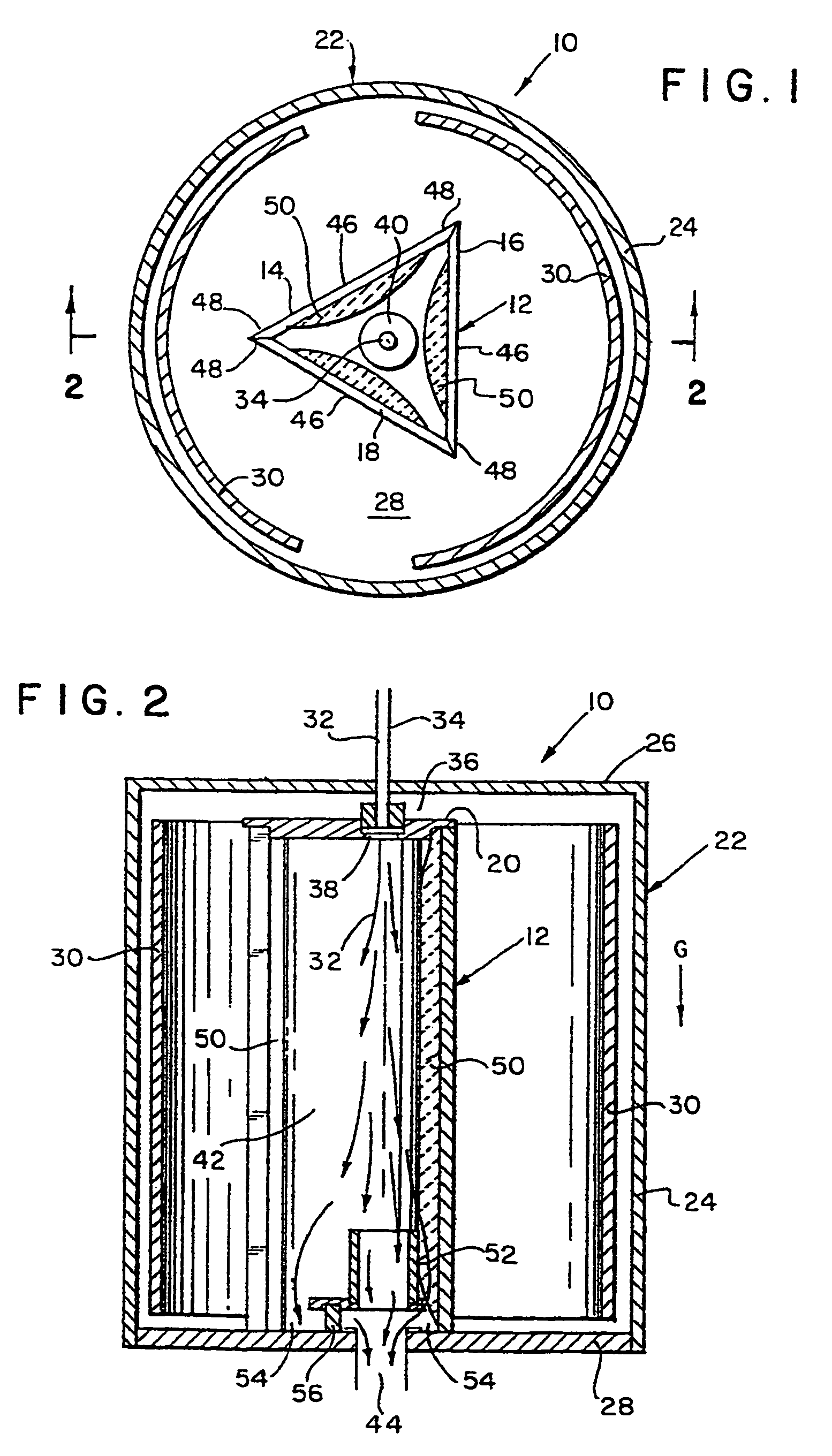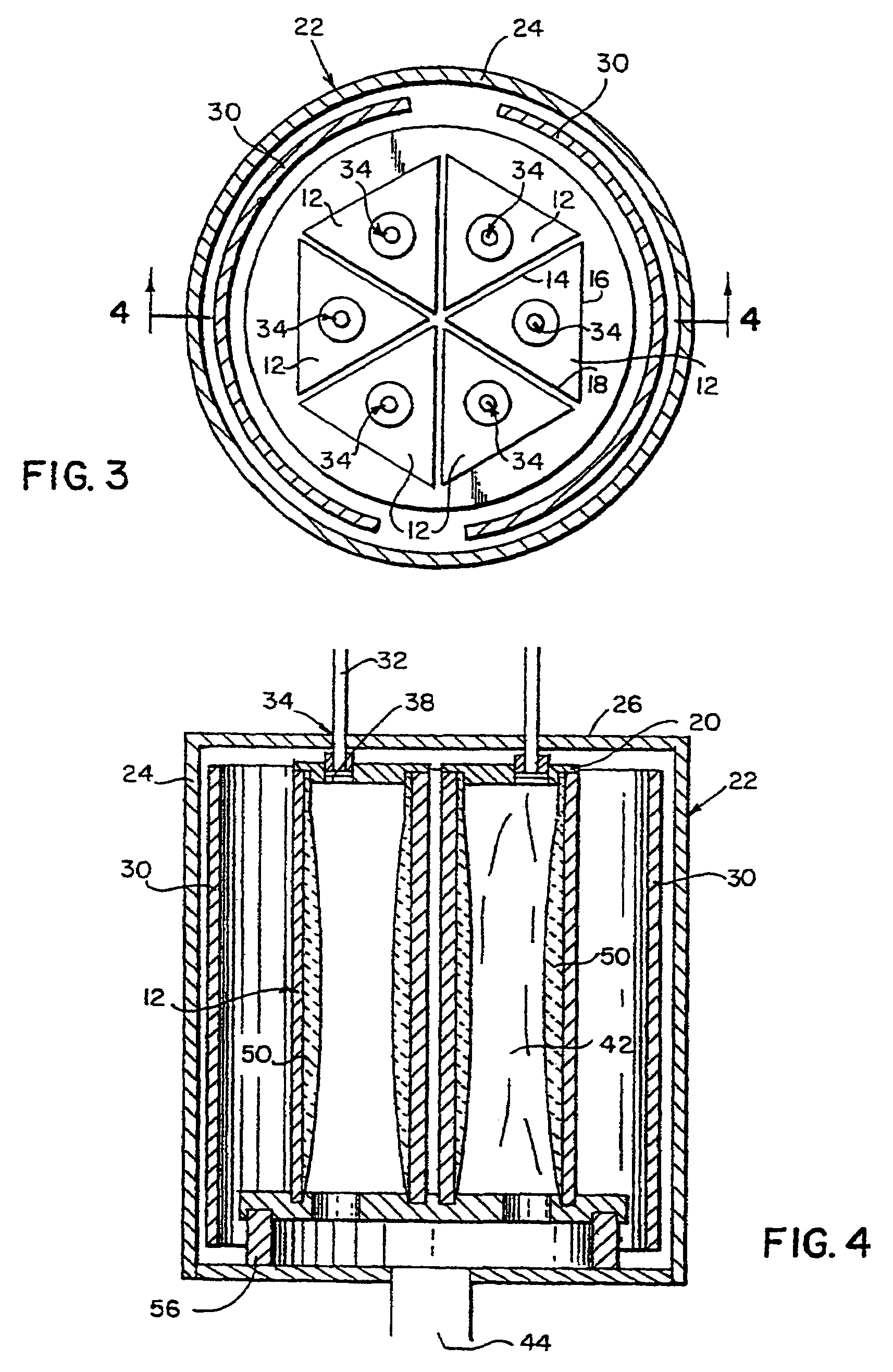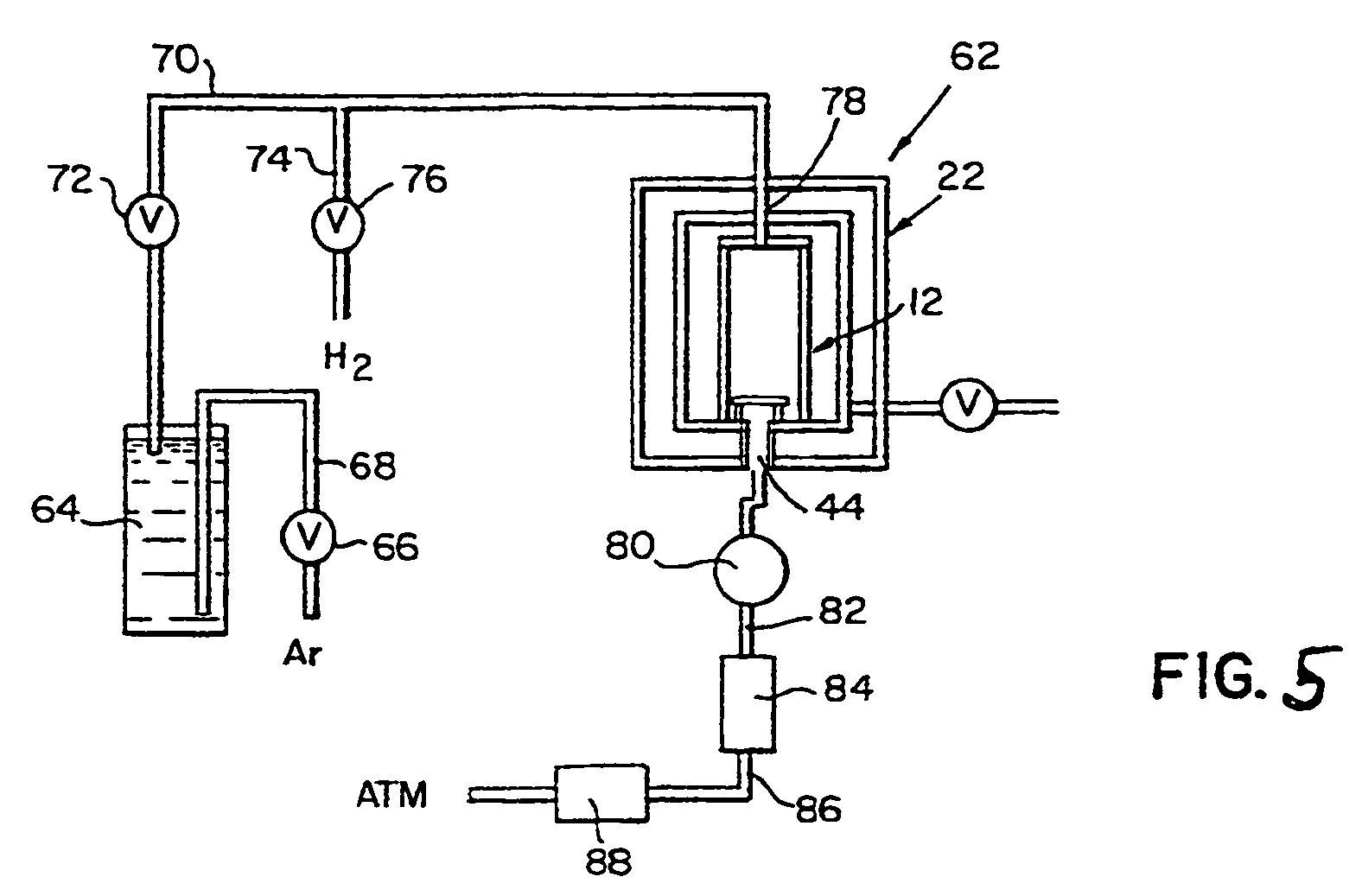Silicon carbide with high thermal conductivity
a silicon carbide and thermal conductivity technology, applied in the direction of polycrystalline material growth, condensed vapor, chemically reactive gases, etc., can solve the problems of high heat generation of many electronic devices, material failure, and insufficient heat dissipation speed of electronic devices, so as to reduce stacking faults
- Summary
- Abstract
- Description
- Claims
- Application Information
AI Technical Summary
Benefits of technology
Problems solved by technology
Method used
Image
Examples
example 1
[0043]SiC was deposited in a triangular deposition setup consisting of six separate deposition boxes as shown in FIGS. 3 and 4. The size of each individual triangular deposition box used was optimized to produce high thermal conductivity SiC. The length of each box was about 78 inches and each side of the triangles was about 21 inches. The reagent flow was from top to bottom such that the reagent flow was parallel to the graphite mandrels. To produce CVD-deposited SiC in accordance with the invention, temperature, pressure, H2 / MTS ratio and deposition rate preferably is within the ranges set forth below, regardless of specific furnace design.
[0044]The temperature of the deposition chambers was about 1355° C. The furnace pressure was about 200 torr. The gas flow rate for H2 was about 67 slpm (standard liters per minute measured at atmosphere pressure and 20° C.), and the gas flow rate for MTS was about 11 slpm. Argon gas was employed as the carrier gas at a flow rate of about 69 slpm...
PUM
| Property | Measurement | Unit |
|---|---|---|
| grain size | aaaaa | aaaaa |
| temperature | aaaaa | aaaaa |
| temperature | aaaaa | aaaaa |
Abstract
Description
Claims
Application Information
 Login to View More
Login to View More - R&D
- Intellectual Property
- Life Sciences
- Materials
- Tech Scout
- Unparalleled Data Quality
- Higher Quality Content
- 60% Fewer Hallucinations
Browse by: Latest US Patents, China's latest patents, Technical Efficacy Thesaurus, Application Domain, Technology Topic, Popular Technical Reports.
© 2025 PatSnap. All rights reserved.Legal|Privacy policy|Modern Slavery Act Transparency Statement|Sitemap|About US| Contact US: help@patsnap.com



